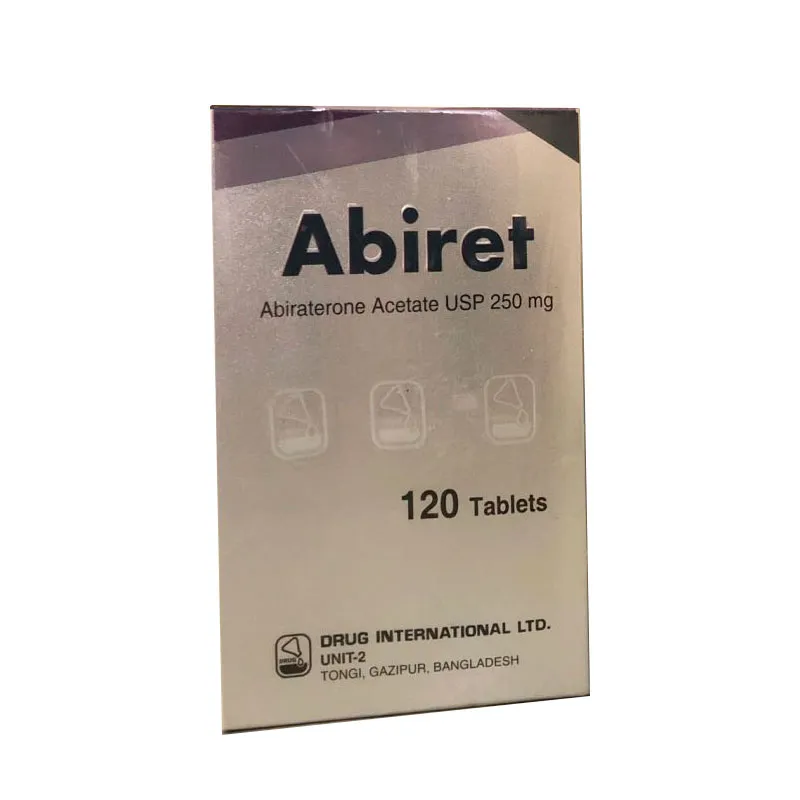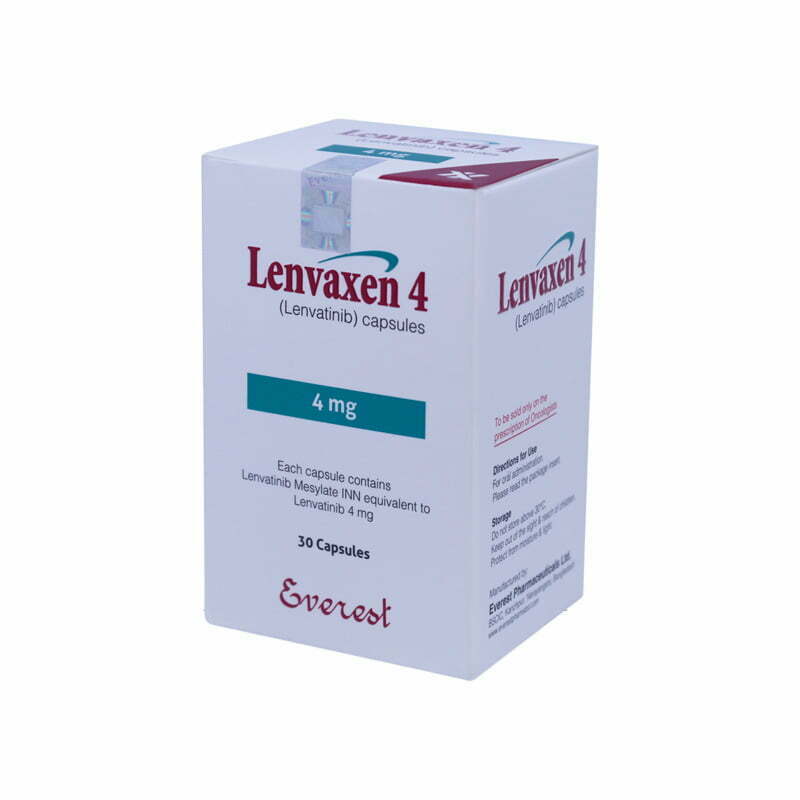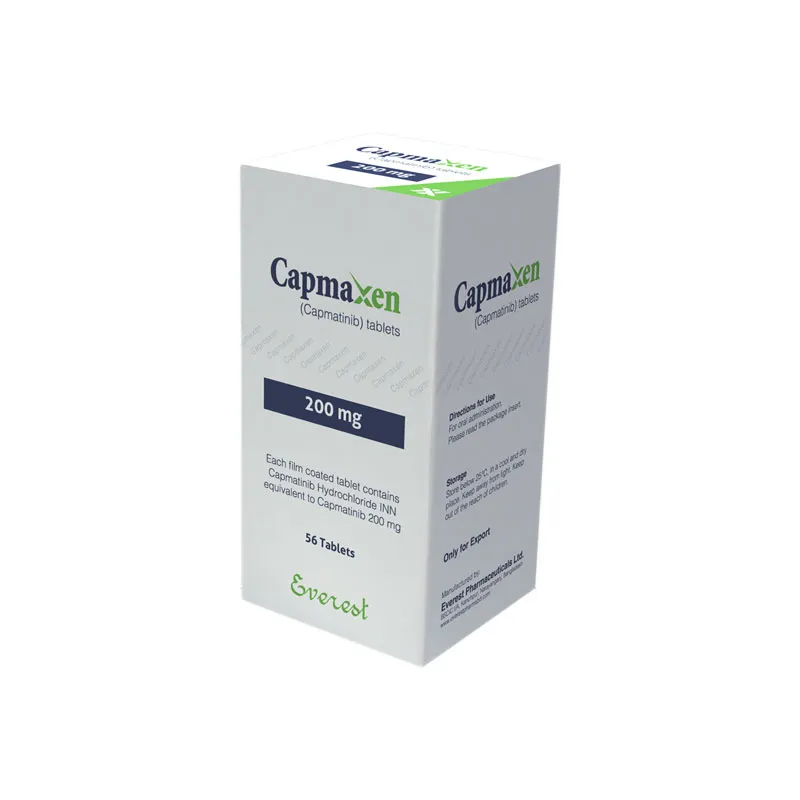Buy Generic Venetoclax 100 mg tablets
Inquire UsDescription
what is venetoclax used for ?
Venetoclax is used alone or in combination with obinutuzumab or rituximab to treat certain types of chronic lymphocytic leukemia (CLL; a type of cancer that begins in the white blood cells) or certain types of small lymphocytic lymphoma (SLL; a type of cancer that begins mostly in the lymph nodes). It is also used in combination with either azacitidine, decitabine, or cytarabine as a first treatment for acute myeloid leukemia (AML; a type of cancer that begins in the white blood cells) in people 75 years of age or older, or in adults who have medical conditions that prevents them from being treated with other chemotherapy medications. Venetoclax is in a class of medications called B-cell lymphoma-2 (BCL-2) inhibitors. It works by blocking the action of a certain protein in the body that helps cancer cells survive. This helps to kill cancer cells. Information source: MedlinePlus.
Why should you buy generic venetoclax 100 mg tablets?
First of all generic Ventoxen is very affordable version of venetoclax for chronic lymphocytic leukemia patients. It is a verified generic version of Venclexta. Everest pharmaceuticals Limited manufacture this generic version in Bangladesh. It is one of the renowned pharmaceutical companies who mostly made cancer medicine in Bangladesh. After the Directorate General of Drug Administration of Bangladesh approves to manufacture Venetoclax, they started to make it and sell it all over the world where generic medicine is allowed to use.
It is the 2th generic version of Venclexta which is selling regularly all over the world. It is also 91% cheaper than the brand version of venetoclax. Which cost you less than 400 dollars. To check out other Leukemia medicine please visit our shop page.
COMPOSITION
VENTOXEN Tablet: Each film coated tablet contains Venetoclax INN 100 mg.
Venetoclax Indications
Venetoclax in combination with Rituximab is indicated for the treatment of adult patients with chronic lymphocytic leukaemia (CLL) who have received at least one prior therapy.
Venetoclax monotherapy is indicated for the treatment of CLL:
- In the presence of 17p deletion or TP53 mutation in adult patients who are unsuitable for or have failed a B-cell receptor pathway inhibitor, or
- In the absence of 17p deletion or TP53 mutation in adult patients who have failed both chemoimmunotherapy and a B-cell receptor pathway inhibitor.
DOSAGE & ADMINISTRATION
The starting dose is 20 mg of Venetoclax once daily for 7 days. The dose must be gradually increased over a period of 5 weeks up to the daily dose of 400 mg as shown in Table 1.
Table 1: Dose increase schedule
| Week | Venetoclax daily dose |
| 1 | 20 mg |
| 2 | 50 mg |
| 3 | 100 mg |
| 4 | 200 mg |
| 5 | 400 mg |
The 5-week dose-titration schedule is designed to gradually reduce tumour burden (debulk) and decrease the risk of tumour lysis syndrome.
Post–titration dose for Venetoclax in combination with Rituximab The recommended dose of Venetoclax in combination with Rituximab is 400 mg once daily. Rituximab should be administered after the patient has completed the dose-titration schedule and has received the recommended daily dose of 400 mg Venetoclax for 7 days. Venetoclax should be taken for 24 months from Cycle 1 Day 1 of Rituximab.
Post–titration dose for Venetoclax monotherapy
The recommended dose of Venetoclax is 400 mg once daily. Treatment should be continued until disease progression or no longer tolerated by the patient.
Elderly
No specific dose adjustment is required for elderly patients (aged 65 years).
Renal impairment
No dose adjustment is needed for patients with mild or moderate renal impairment (CrCI 30 ml/min and <90 ml/min). Patients with reduced renal function (CrCI <80 ml/min) may require more intensive prophylaxis and monitoring to reduce the risk of TLS at initiation and during the dose-titration phase. Safety in patients with severe renal impairment (CrCI <30 ml/min) or on dialysis has not been established, and a recommended dose for these patients has not been determined. Venetoclax should be administered to patients with severe renal impairment only if the benefit outweighs the risk and patients should be monitored closely for signs of toxicity due to increased risk of TLS.
Hepatic impairment
No dose adjustment is recommended in patients with mild or moderate hepatic impairment. Patients with moderate hepatic impairment should be monitored more closely for signs of toxicity at initiation and during the dose-titration phase.
A dose reduction of at least 50% throughout treatment is recommended for patients with severe hepatic impairment. These patients should be monitored more closely for signs of toxicity.
Paediatric population
The safety and efficacy of Venetoclax in children aged less than 18 years have not been established. No data is available.
CONTRAINDICATIONS
Hypersensitivity to the active substance or to any of the excipients. Concomitant use of strong CYP3A inhibitors at initiation and during the dose-titration phase.
Concomitant use of preparations containing St. John’s wort.
WARNINGS AND PRECAUTIONS
Tumour lysis syndrome
Tumour lysis syndrome, including fatal events, has occurred in patients with previously treated CLL with high tumour burden when treated with Venetoclax.
Venetoclax can cause rapid reduction in tumour, and thus poses a risk for TLS in the initial 5-weeks dose-titration phase. Changes in electrolytes consistent with TLS that require prompt management can occur as early as 6 to 8 hours following the first dose of Venetoclax and at each dose increase.
The risk of TLS is a continuum based on multiple factors, including comorbidities. Patients with high tumour burden (e.g., any lymph node with a diameter cm or high ALC25 x 109/1) are at greater risk of TLS when initiating enetoclax. Reduced renal function (CrCI <80 ml/min) further increases the risk. Patients should be assessed for risk and should receive appropriate prophylaxis for TLS, including hydration and anti-hyperuricaemics. Blood chemistries should be monitored and abnormalities managed promptly. Dosing should be interrupted if needed. More intensive measures (intravenous hydration, frequent monitoring, hospitalization) should be employed as overall risk increases. The instructions for “Prevention of tumour lysis syndrome” should be followed.
Concomitant use of this medicinal product with strong or moderate CYP3A inhibitors increases Venetoclax exposure and may increase the risk for TLS at initiation and during the dose-titration phase. Also, inhibitors of P-gp or BCRP may increase Venetoclax exposure.
Neutropenia
Grade 3 or 4 neutropenia has been reported in patients treated with Venetoclax in the combination study with Rituximab (G028667/MURANO) and in the monotherapy studies. Complete blood counts should be monitored throughout the treatment period. Dose interruptions or reductions are recommended for patients with severe neutropenia. Serious infections including events of sepsis with fatal outcome have been reported. Supportive measures including antimicrobials for any signs of infection should be considered.
Immunization
The safety and efficacy of immunization with live attenuated vaccines during or following Venetoclax therapy have not been studied. Live vaccines should not be administered during treatment and thereafter until B-cell recovery.
CYP3A inducers
Co-administration of CYP3A4 inducers may lead to decreased Venetoclax exposure and consequently a risk for lack of efficacy. Concomitant use of Venetoclax with strong or moderate CYP3A4 inducers should be avoided.
Women of childbearing potential
Women of childbearing potential must use a highly effective method of contraception while taking Venetoclax.
Venetoclax side effects leukemia
The most commonly occurring side effects (>_2O%) of any grade in patients receiving Venetoclax in the combination study with Rituximab were neutropenia, diarrhoea, and upper respiratory tract infection. In the monotherapy studies, the most common side effects were neutropenia/neutrophil count decreased, diarrhoea, nausea, anaemia, fatigue, and upper respiratory tract infection.
The most frequently reported serious side effects (2%) in patients receiving Venetoclax in combination with Rituximab were pneumonia, febrile neutropenia, and TLS. In the monotherapy studies, the most frequently reported serious side effects (2%) were pneumonia and febrile neutropenia.
DRUG INTERACTION
Agents that may alter Venetoclax plasma concentrations:
CYP3A inhibitors
Co-administration of 400 mg once daily ketoconazole, a strong CYP3A, P-gp and BCRP inhibitor, for 7 days in 11 previously treated patients with NHL increased Venetoclax Cmax by 2.3-fold and AUG,. by 6.4-fold. Co-administration of 50 mg once daily ritonavir, a strong CYP3A and P-gp inhibitor, for 14 days in 6 healthy subjects increased Venetoclax Cmax by 2.4-fold and AUC by 7.9-fold. Co-administration of Venetoclax with other strong CYP3A4 inhibitors is predicted to increase Venetoclax AUC by on average 5.8- to 7.8-fold.
Concomitant use of Venetoclax with strong CYP3A inhibitors (e.g., itraconazole, ketoconazole, posaconazole, voriconazole, clarithromycin, ritonavir) at initiation and during the dose-titration phase is contraindicated due to increased risk for TLS.
At initiation and during the dose-titration phase, concomitant use of Venetoclax with moderate CYP3A inhibitors (e.g., ciprofloxacin, diltiazem, erythromycin, fluconazole, verapamil) should be avoided. Alternative treatments should be considered. If a moderate CYP3A inhibitor must be used, the initiation dose of Venetoclax and the doses for the titration phase should be reduced by at least 50%. Patients should be monitored more closely for signs and symptoms of TLS.
For patients who have completed the dose-titration phase and are on a steady daily dose of Venetoclax, the Venetoclax dose should be reduced by 50% when used concomitantly with moderate CYP3A inhibitors and by 75% when used concomitantly with strong CYP3A inhibitors. Patients should be monitored more closely for signs of toxicities and the dose may need to be further adjusted. The Venetoclax dose that was used prior to initiating the CYP3A inhibitor should be resumed 2 to 3 days after discontinuation of the inhibitor.
Grapefruit products, Seville oranges, and starfruit (carambola) should be avoided during treatment with Venetoclax as they contain inhibitors of CYP3A.
P–gp and BCRP inhibitors
Venetoclax is a substrate for P-gp and BCRP. Co-administration of a 600 mg single dose of rifampin, a P-gp inhibitor, in 11 healthy subjects increased Venetoclax Cmax by 106% and AUC.. by 78%. Concomitant use of Venetoclax with P-gp and BCRP inhibitors at initiation and during the dose-titration phase should be avoided; if a P-gp and BCRP inhibitor must be used, patients should be monitored closely for signs of toxicities.
CYP3A inducers
Co-administration of 600 mg once daily rifampin, a strong CYP3A inducer, for 13 days in 10 healthy subjects decreased Venetoclax Cmax by 42% and AUC.. by 71%. Concomitant use of Venetoclax with strong CYP3A inducers (e.g., carbamazepine, phenytoin, rifampin) or moderate CYP3A inducers (e.g., bosentan, efavirenz, etravirine, modafinil, nafcillin) should be avoided. Alternative treatments with less CYP3A induction should be considered. Preparations containing St. John’s wort are contraindicated during treatment with Venetoclax, as efficacy may be reduced.
Azithromycin
In a drug-drug interaction study in 12 healthy subjects, co-administration of 500 mg of azithromycin on the first day followed by 250 mg of azithromycin once daily for 4 days decreased Venetoclax Cmax by 25% and AUCoo by 35%. No dose adjustment is needed during short-term use of azithromycin when administered concomitantly with Venetoclax.
Gastric acid reducing agents
Based on population pharmacokinetic analysis, gastric acid reducing agents (e.g., proton pump inhibitors, H2-receptor antagonists, antacids) do not affect Venetoclax bioavailability.
Bile acid sequestrants
Co-administration of bile acid sequestrants with Venetoclax is not recommended as this may reduce the absorption of Venetoclax. If a bile acid sequestrant is to be co-administered with Venetoclax, the SmPC for the bile acid sequestrant should be followed to reduce the risk for an interaction, and Venetoclax should be administered at least 4-6 hours after the sequestrant.
Agents that may have their plasma concentrations altered by Venetoclax:
Warfarin
In a drug-drug interaction study in three healthy volunteers, administration of a single dose of 400 mg Venetoclax with 5 mg warfarin resulted in an 18% to 28% increase in Cmax and AUC of R-warfarin and 5-warfarin. Because Venetoclax was not dosed to steady state, it is recommended that the international normalized ratio (INR) be monitored closely in patients receiving warfarin.
Substrates of P–gp, BCRP, and OATP1 B1
Venetoclax is a P-gp, BCRP and OATP1B1 inhibitor in vitro. In a drug-drug interaction study, administration of a single 100 mg dose of Venetoclax with 0.5 mg digoxin, a P-gp substrate, resulted in a 35% increase in digoxin Cmax and a 9% increase in digoxin AUC. Co-administration of narrow therapeutic index P-gp, or BCRP substrates (e.g., digoxin, dabigatran, everolimus, sirolimus) with Venetoclax should be avoided.
If a narrow therapeutic index P-gp or BCRP substrate must be used, it should be used with caution. For an orally administered P-gp or BCRP substrate sensitive to inhibition in the gastrointestinal tract (e.g., dabigatran exetilate), its administration should be separated from Venetoclax administration as much as possible to minimize a potential interaction.
If a statin (OATP substrate) is used concomitantly with Venetoclax, close monitoring of statin-related toxicity is recommended.
PHARMACOLOGY
Venetoclax is a selective and orally bioavailable small-molecule inhibitor of BCL-2, an antiapoptotic protein. Overexpression of BCL-2 has been demonstrated in CLL cells where it mediates tumor cell survival and has been associated with resistance to chemotherapeutics. Venetoclax helps restore the process of apoptosis by binding directly to the BCL-2 protein, displacing pro-apoptotic proteins like BIM, triggering mitochondrial outer membrane permeabilization and the activation of caspases. In nonclinical studies, venetoclax has demonstrated cytotoxic activity in tumor cells that overexpress BCL-2.
Fertility, pregnancy and lactation
Women of childbearing potential/Contraception in females
Women should avoid becoming pregnant while taking Venetoclax and for at least 30 days after ending treatment. Therefore, women of childbearing potential must use highly effective contraceptive measures while taking Venetoclax and for 30 days after stopping treatment. It is currently unknown whether Venetoclax may reduce the effectiveness of hormonal contraceptives, and therefore women using hormonal contraceptives should add a barrier method.
Pregnancy
Based on embryo-foetal toxicity studies in animals, Venetoclax may harm the fetus when administered to pregnant women.
There is no adequate and well-controlled data from the use of Venetoclax in pregnant women. Studies in animals have shown reproductive toxicity. Venetoclax is not recommended during pregnancy and in women of childbearing potential not using highly effective contraception.
Breast–feeding
It is unknown whether Venetoclax or its metabolites are excreted in human milk. A risk to the breast-feeding child cannot be excluded. Breast-feeding should be discontinued during treatment with Venetoclax.
Fertility
No human data on the effect of Venetoclax on fertility are available. Based on testicular toxicity in dogs at clinically relevant exposures, male fertility may be compromised by treatment with Venetoclax. Before starting treatment, counselling on sperm storage may be considered in some male patients.
OVERDOSE
There is no specific antidote for Venetoclax. Patients who experience overdose should be closely monitored and appropriate supportive treatment provided. During dose-titration phase, treatment should be interrupted and patients should be monitored carefully for signs and symptoms of TLS (fever, chills, nausea, vomiting, confusion, shortness of breath, seizures, irregular heartbeat, dark or cloudy urine, unusual tiredness, muscle or joint pain, abdominal pain and distension) along with other toxicities.
PHARMACEUTICAL INFORMATION
STORAGE
Store below 30°C. Keep VENTOXEN out of the sight and reach of children. Protect from moisture and light.
How Supplied
VENTOXEN Tablet: Each HDPE container of VENTOXEN contains 60 film-coated tablets (each tablet contains 100 mg Venetoclax) a silica gel desiccant and polyester coil with a child-resistant closure.
Generic Venetoclax 100 mg tablets price
Generic venetoclax 100 mg 60 tablets price only 330 USD. 100 Meds can help you to find reliable and verified medicine at affordable cost. Please contact our support team by using email, whatsapp or wechat. Even you can contact our facebook page.
1 review for Buy Generic Venetoclax 100 mg tablets
You must be logged in to post a review.






Ballack –
I am from Berlin,Germany. 100 meds offers excellent service. Thank you for providing me generic venetoclax. I received this medicine without any problem.